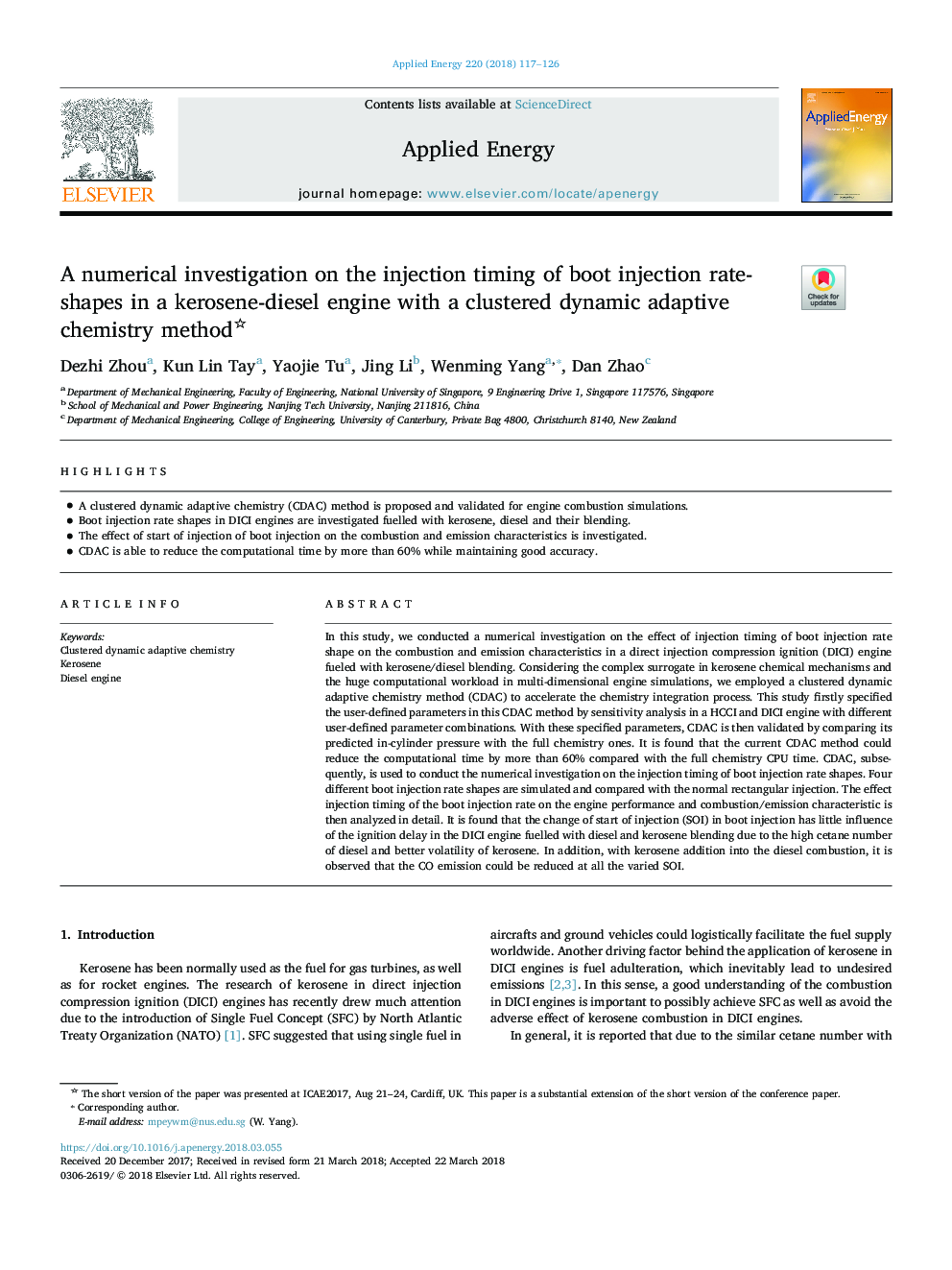| کد مقاله | کد نشریه | سال انتشار | مقاله انگلیسی | نسخه تمام متن |
|---|---|---|---|---|
| 6680356 | 1428070 | 2018 | 10 صفحه PDF | دانلود رایگان |
عنوان انگلیسی مقاله ISI
A numerical investigation on the injection timing of boot injection rate-shapes in a kerosene-diesel engine with a clustered dynamic adaptive chemistry method
ترجمه فارسی عنوان
تحقیقات عددی در مورد زمان تزریق نرخ سرعت تزریق بوت در یک موتور دیزل نفت سفید با یک روش شبیه ساز پویا خوشه ای
دانلود مقاله + سفارش ترجمه
دانلود مقاله ISI انگلیسی
رایگان برای ایرانیان
کلمات کلیدی
شیمی سازگار پویا خوشه ای، نفت سفید موتور دیزل،
موضوعات مرتبط
مهندسی و علوم پایه
مهندسی انرژی
مهندسی انرژی و فناوری های برق
چکیده انگلیسی
In this study, we conducted a numerical investigation on the effect of injection timing of boot injection rate shape on the combustion and emission characteristics in a direct injection compression ignition (DICI) engine fueled with kerosene/diesel blending. Considering the complex surrogate in kerosene chemical mechanisms and the huge computational workload in multi-dimensional engine simulations, we employed a clustered dynamic adaptive chemistry method (CDAC) to accelerate the chemistry integration process. This study firstly specified the user-defined parameters in this CDAC method by sensitivity analysis in a HCCI and DICI engine with different user-defined parameter combinations. With these specified parameters, CDAC is then validated by comparing its predicted in-cylinder pressure with the full chemistry ones. It is found that the current CDAC method could reduce the computational time by more than 60% compared with the full chemistry CPU time. CDAC, subsequently, is used to conduct the numerical investigation on the injection timing of boot injection rate shapes. Four different boot injection rate shapes are simulated and compared with the normal rectangular injection. The effect injection timing of the boot injection rate on the engine performance and combustion/emission characteristic is then analyzed in detail. It is found that the change of start of injection (SOI) in boot injection has little influence of the ignition delay in the DICI engine fuelled with diesel and kerosene blending due to the high cetane number of diesel and better volatility of kerosene. In addition, with kerosene addition into the diesel combustion, it is observed that the CO emission could be reduced at all the varied SOI.
ناشر
Database: Elsevier - ScienceDirect (ساینس دایرکت)
Journal: Applied Energy - Volume 220, 15 June 2018, Pages 117-126
Journal: Applied Energy - Volume 220, 15 June 2018, Pages 117-126
نویسندگان
Dezhi Zhou, Kun Lin Tay, Yaojie Tu, Jing Li, Wenming Yang, Dan Zhao,
